April is the cruelest month, or so the poet said, but for me it’s November. It starts with the end of daylight time and then just gets darker, damper, maybe a little claustrophobic. In my family, November is a month full of birthdays (my own included) and celebrations, but it’s also dotted with the kind of days they don’t make greeting cards for: the days that remind you how many years it’s been since someone died; since life, in their wake, took on new shapes.
We all have our own dark months, some of which probably fall in the summer, where you have the contrast of emotions and sunlight to contend with, or in spring, when everything feels like it should be new but that doesn’t stop old aches from weighing you down. I have never put enough thought into my rituals for the dark, heavy months, but I do have habits: I make more tea and hot toddies, watch more silly television, give myself entire days to read without getting out of bed if I don’t feel like it.
But what do you read when you’re trying to fight the urge to wallow?
There’s a kind of book that often fits this bill, for me, but it’s a kind that’s hard to identify before you’re halfway into it. It’s almost a sad banger, but of a specific subset, full of catharsis, breakthroughs, things that have to be hard before they can get easier. I would never have guessed, for instance, that GennaRose Nethercott’s Thistlefoot was going to be one of these books. It starts off rollicking and clever before shifting gears, taking itself through a whole collection of paces before winding up exactly where it always had to go: in difficult, vital, revitalizing catharsis. Not heartbreak, and not triumph. Maybe you cry at the end, but maybe you just need to sit for a while. Maybe so much happens that you get knocked out of your own head just long enough to see things from a much-needed different perspective.
For some readers, dark months are for rereading—a choice I understand but often struggle with. There are just so many more books to read. I tend to reread only if I have a reason: a new book coming out in a series I read ages ago is always a good one. (Last winter was for reading Kristin Cashore’s Graceling Realm books, which are excellent dark-months company.) Ruth Ozeki’s A Tale for the Time Being would be exactly the right thing to reread right now—a book I adore but remember only in vague feelings and faded images—but her more recent book is still sitting on my shelf, unopened, and I’d feel guilty leaving it there in favor of an old love.
Fight-the-wallowing books are among the hardest to recommend. You just can’t know what the inside of someone else’s head feels like; you can only try to be intimately familiar with the contents of your own mind, and the way certain books, or types of books, make you feel. Some people want comfort over challenge, and that’s valid (and reminds me that I still need to read The House in the Cerulean Sea). Some want the familiar over the strange, which works, too. If you don’t want to reread, saving a book by a beloved author—the “break glass in case of emergency” book—can be just the thing. (Sometimes, a person with too many unread books might do this by accident. I went months having forgotten the most recent Franny Billingsley was already on my shelf.)
Sometimes, when facing a dark month and the temptation of altogether too many potential TV marathons, I do what I always do when overwhelmed: Make a list. It’s not exactly a to-do list, because that sounds like work. It’s a maybe-this-would-help list, or a have-you-considered list, or a refer-to-this-when-decisions-are-hard list. It’s a list that is easier to make at the start of a dark month, when everything is only on the verge of becoming too much but isn’t actually there yet.
This is what my November reading will look like. Maybe.
Seasparrow by Kristin Cashore: It’s a new Graceling Realm novel, which means it’s a given I’m going to read it—but it’s also about a sly and complicated character, is set on a ship, and seems to take place primarily in the cold, which is a whole list of things that make me say yes and yes and yes, please, yes. Bitterblue is one of my all-time favorite cathartic books, and I know I can count on Cashore for some grade-A feelings that I don’t really know what to do with.
The Last Days of Roger Federer: And Other Endings by Geoff Dyer: I have read exactly one Geoff Dyer book (Out of Sheer Rage) about a million years ago, and I have never really stopped thinking about it. This nonfiction book is not about tennis, despite the subject of the title, but it is about artists and athletes and how they and their work age, and this all feels right for a month in which I cannot help but thing about the ends of things, and how we reach them.
The Book of Form and Emptiness by Ruth Ozeki: I would follow Ozeki anywhere.This book is described as being about “loss, growing up, and our relationship with things,” which is essentially a list of things in which I am interested. Also it is full of talking inanimate objects.
The Book of Lamps and Banners by Elizabeth Hand: Cass Neary is my kind of comfort character. I don’t know why I didn’t read this book when I first got it, but now I wonder if I was simply saving it for a dark November when all I want is to hang out with the weirdos and the loners and the accidental detective who, in this tale, gets involved with a stolen and possibly magical manuscript.
The Broken Kingdoms by N.K. Jemisin: What I said before about break-glass-in-case-of-emergency books? These are some of mine. I tore through The Broken Earth series just as fast as they came out, but have been dragging my heels on Jemisin’s earlier series—because I don’t want to run out of Jemisin books.
The thing about a list, an idea or hope or plan or concept written out (or a list that takes the form of a pile of books), is that it is a document of things to look forward to. It’s an intention, if you will. It’s a way to say to yourself that the dark month can have more in it than darkness, tiredness, and old aches. Those may be inevitable, but they don’t have to be all. Pour yourself a glass of the most indulgent thing you can think of—fancy tea, your favorite whiskey, a wine as red as garnets—and put on the coziest thing in your closet. And go somewhere else for a while with a writer who takes you by the hand and shows you a life other than your own.
What will you read in your dark months?
Molly Templeton lives and writes in Oregon, and spends as much time as possible in the woods. Sometimes she talks about books on Twitter.










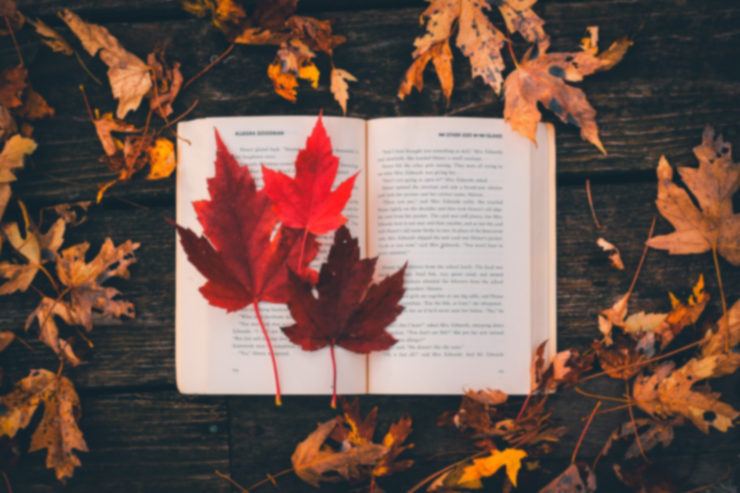
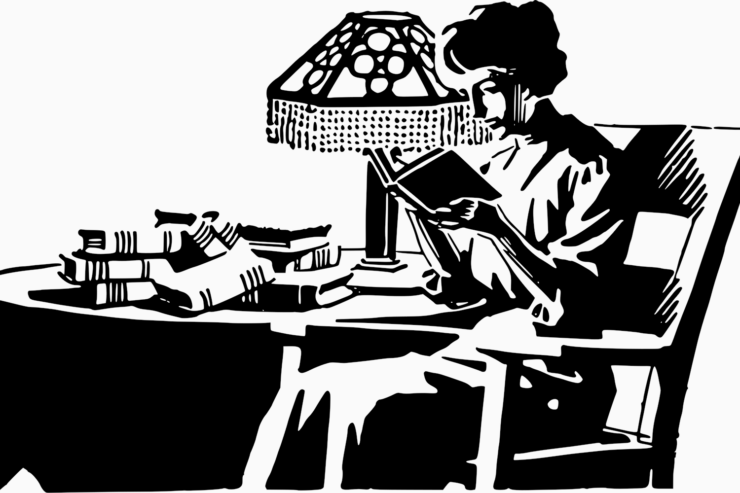
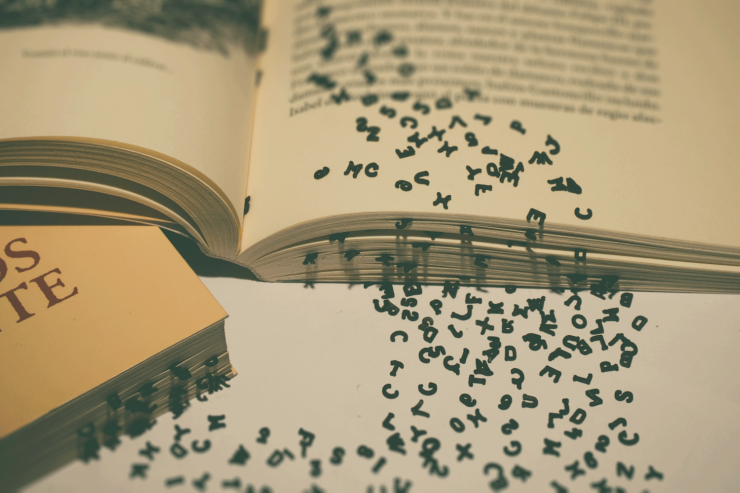
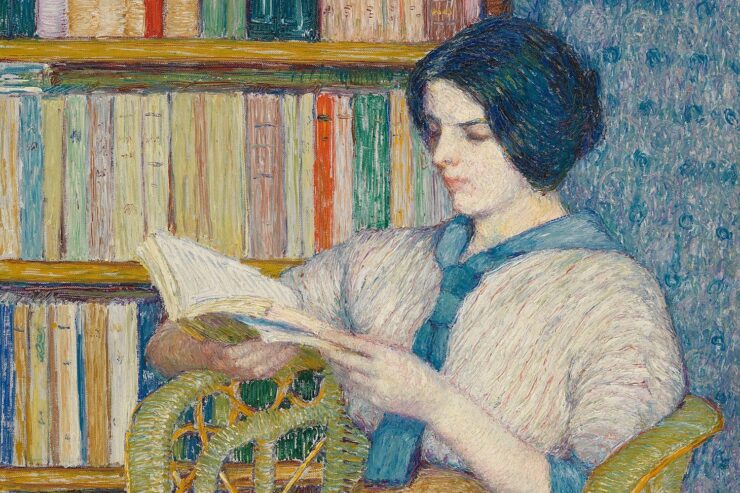
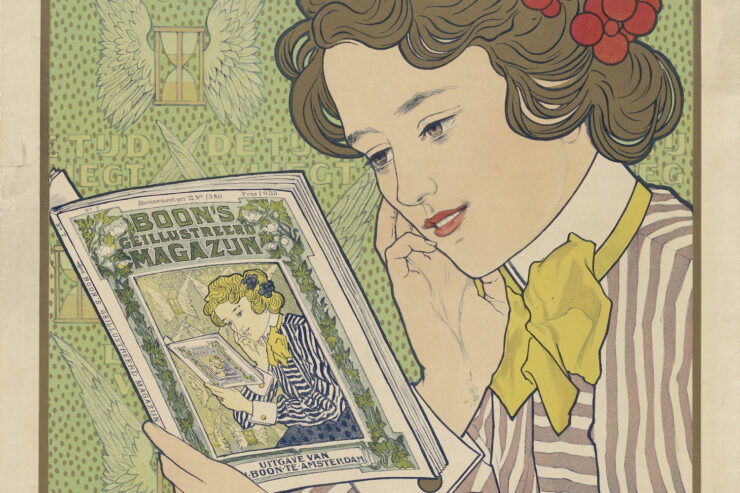
As a high school teacher and part time college professor, I struggle with free time from September to May. God help me if I fall into an amazing book at 10 pm, and don’t claw my way out until 2am!! I will be non-functioning in my regular life.
So I re-read during the college semesters, and save new material for Christmas/New Year’s break, and the summer. When it gets dark and cold, I reach for comfort food of the brain- books that I loved, and since I know what’s going to happen, I can pull myself back to reality and keep a fairly normal schedule!
Interesting post!
December is the difficult time for me, because of losses. I’m not sure yet what I’ll read . . . maybe some go-to distractions or something new . . . for a reread/generally cheerful reread/not wallow/distraction, it’s Lewis’ Surprised by Joy, Lovelace’s Betsy Was A Junior, and Alcott’s An Old-Fashioned Girl. And in October I needed something distracting so it was Philosopher’s Stone.
For a having-a-bad-mental health-day catharsis, it’s Montgomery’s The Blue Castle and The Divine Secrets of the Ya-Ya Sisterhood.
For a concerned-about-the-state-of-society day catharsis, it’s Order of the Phoenix, Deathly Hallows, and The Origins of Totalitarianism, Volume 3, and sometimes The Letters of J.R.R. Tolkien.
The pandemic lockdown and aftermath was a Long Dark Teatime of the Soul for millions of people. Romance sales soared. Fluffy plot lines and happy ending for the emotional win. So, yes, some people self-medicate with fiction. I’ve not seen any numbers, but I’m sure that writers like Terry Pratchett and Douglas Adams had lots of sales and rereads. The Harry Potter series was also reread in millions of households, too. We’re like children who want the same book read to us every night as a comforting ritual.
When the world felt apocalyptic in the past (Hurricane Katrina and the like), I leaned on Island In The Sea of Time (S.M. Stirling) for an example of a community pulling together to survive. During the pandemic lockdown I needed ordinary people thrust into adventure, and T. Kingfisher’s world of the White Rat, especially Swordheart, were my comfort reading.
I don’t re-read much, if at all.
However.
When I feel ‘dark’, I don’t want to deal with something new. Could make things worse by associations. So I will re-read one of a couple of very specific and limited number of books. They made me feel like it was possible to be a better person, hopeful for the world, wondering. Books like blankets to burrow under.
Funny you should mention The house on the Cerulean Sea – I first read it this year and it could be one of them, if it holds up under re-reading…
Comfort rereads in dark times for me have to be the right balance of immersive and funny, preferably by a long time favorite author. Terry Pratchett’s The Wee Free Men hits the spot. Also Nine Goblins by T. Kingfisher and Captain Vorpatril’s Alliance by Lois McMaster Bujold.
I’ve reread Captain Vorpatril’s Alliance more than any other Bujold book for just that reason.
I know a science teacher who re-reads Gentleman Jole and the Red Queen whenever she becomes depressed to remind herself just how important her job really is.
Becky Chambers’ Monk and Robot books (A Psalm For the Wild Built and A Prayer For the Crown Shy). There’s a gentle, comforting feeling to them. They’re cozy and go well with tea and a blanket. They warm my soul.
I usually pick authors I know what to expect from in darker reading times. Having just come off a fairly intense horror reading month I chose a Wayward Children book from Seanan McGuire to break-up things and remind me books don’t have to be scary.
I’ve got a million ‘emergency break’ books on the shelf that I’m ‘saving’ for some unknown reason. I think Prince of Thieves trilogy from Mark Lawrence is going to be my next pull from that extensive list/shelf.
I too need to get to Cerulean Sea but haven’t been in the mood for lighter works until recently. I do love darker books as they make my life, no matter how tough some days, seem easy in comparison. As I’m not fighting off killer robots, tracking down an evil wizard, being oppressed for being a Graceling or stuck in an endless prison; therefore, my life must be pretty good. :)
Great article and topic! I think what we read and when really matters. I’ve never been able to go back to Erikson’s Garden of the Moon after giving up while reading it in the hospital. It was a poor choice, but emergency happens and I was reading it at the time. It’s not fair to say that series is awful as I was feeling so low at the time. One day I hope to come back to it and enjoy it as much as most have.
I found The House on the Cerulean Sea to be kind of depressing myself. The main characters are lovely, brave humans but they are brave in the face of an awful, uncaring system.
I will get lost in whatever I can, but when I can’t fit something new in my head, I reread. In Other Lands is a good one. A Deadly Education. I like the snarky ones, clearly. But agree with @9 that Monk and Robot will always leave one feeling better.
Also, anything by Forthright is a good bet!
“April is the cruelest month, or so the poet said, but for me it’s November. It starts with the end of daylight time and then just gets darker, damper, maybe a little claustrophobic. In my family, November is a month full of birthdays (my own included) and celebrations, but it’s also dotted with the kind of days they don’t make greeting cards for”
This exactly. Today is my birthday, and I’m occupied with my hate for November — when life and color drain from the world, when we struggle to grab small amounts of time in sunshine and the cycle’s turning at Winter Solstice still feels far away.
My comfort reads are defined by a lack of plot twists that push me into pits of despairing envy, generally a constant hazard of reading. Some, like the Enchanted Forest Chronicles by Patricia C. Wrede, are relatively light but so familiar and wonderul that I can simply love them. Others center on characters who suffer enough that I rarely envy them and can thus find rhem relaxing, combined with the beautifully vivid settings and snarky dialogue that I consider essential ingredients in a story. For the latter, my go-to is usually A Song of Ice and Fire, but I’ve spent much of this year on my first reread of the Realm of the Elderlings series complex (four trilogies and one quartet) by Robin Hobb, which also fits the bill. I’ve saved one of my favorite segments of it, the Rain Wilds quartet, for the soon-upcoming time when I plan to be recovering from surgery.
Maybe I’d reread ‘Mr. Palomar’, by Italo Calvino. I felt good reading it,
I brought to my life (for a few days at least) that way of looking at the world,
by Palomar: calm, thoughtful, not neurotic.
I am another who re-reads for comfort. Some recent titles are ~
Andrea Höst’s Touchstone series
SK Dunstall’s Linesman series
Katherine Addison’s The Goblin Emperor
Anne Bishop’s The Others